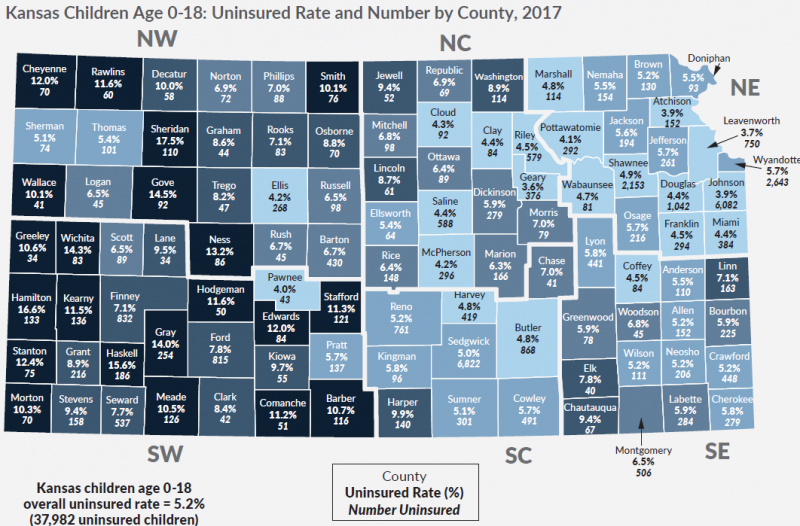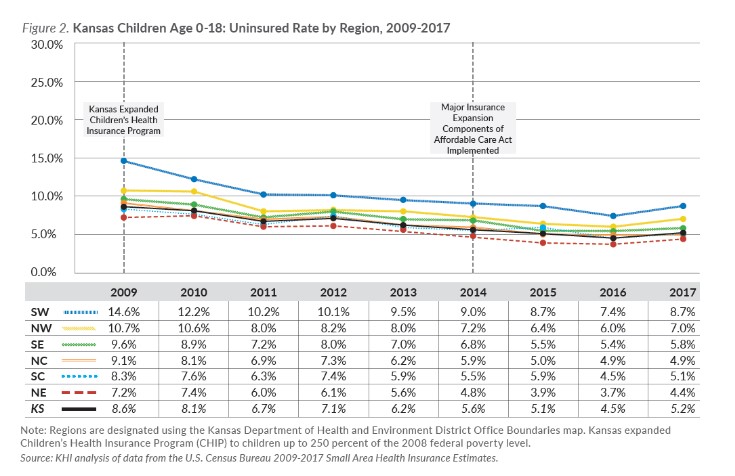Gains in health insurance coverage have stalled in recent years for Kansas children age 0-18. In 2017, the overall uninsured rate among Kansas children was 5.2 percent (37,982 uninsured children).
This fact sheet examines the county-specific uninsured rate among Kansas children in 2017 (Figure 1) — the most recent year for which county-level data are available — and regional changes in the uninsured rate for children from 2009 to 2017 (Figure 2). It uses data from the U.S. Census Bureau 2017 Small Area Health Insurance Estimates.

